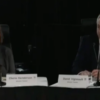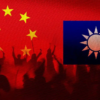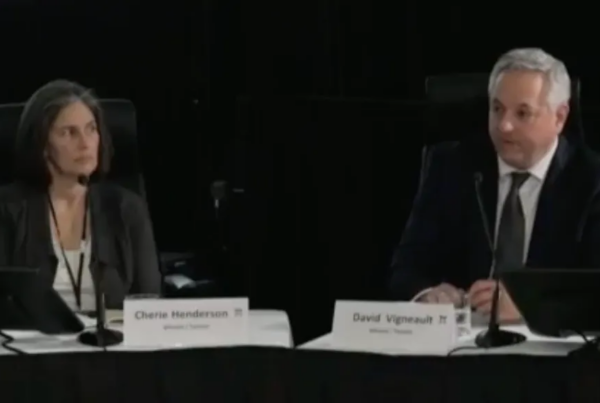THE CALIPHATE – THE SYMBOLIC HOMELAND OF THE ISLAMIC STATE.
The cities of Mosul, Iraq and Raqqa, Syria, represent the ‘homeland’ for IS leadership, whose intent is to maintain and expand the caliphate. By securing territory, incorporating law and order in the form of sharia, retaining a population base, collecting taxes and distributing social services, the IS has for all intents and purposes, created a nation state. Also described as a proto-state, it is not recognized by the international community. The IS continues to export oil and antiquities, tax inhabitants and, through its savvy social media capabilities, attract potential terrorists and train them. Mosul and Raqqa represent a centre of gravity that, if lost by the IS, would likely have serious consequences that could result in the strategic failure of the caliphate.
If the U.S.-led coalition wishes to destroy the IS, Mosul and Raqqa become strategic objectives that would have to be taken by ground forces. The question is who would be the ground forces? To date, the U.S. has failed to rebuild an effective Iraqi Army capable of undertaking complex conventional military operations within their own borders. The Kurds, who represent the most effective ground forces, are politically sensitive and astute enough to forego any ground force operation that would transgress Arab territory. Moreover, Kurdish leadership will likely continue to effectively resist any IS aggression against what is deemed to be Kurdish territory, with an eye to future independence from Baghdad.
REBUILDING IRAQ’s ARMY
Massive monies have been expended on all types of modern military equipment, including tanks and artillery to rebuild the Iraqi Army. In addition, months and years of American and coalitional manpower have been devoted to the training, equipping, development and mentoring of soldiery, leadership and assistance provided to Iraqi military units in both training and operations. However, it would appear that these efforts have not garnered a satisfactory outcome. Consistent with the Iraqi experience, American-backed Syrian liberation forces, of various stripes, appear unready to engage effectively. Considering the ongoing friction between the U.S. and Iranian-backed Iraqi governments, it is highly unlikely that the U.S. government or military view the rebuilding of Iraq’s military as viable at this present time.
A FRENCH RUSSIAN ENTENTE CORDIALE
In the wake of the Paris attacks, the former French president, Nicolas Sarkozy, argued that France should make a common cause with Vladimir Putin’s Russia against the IS. This would have been a politically pragmatic move, in order to concentrate their respective efforts on the destruction of the IS in situ. However, such an initiative falls directly into the Islamic State’s strategic design of inserting Western – read Christian crusader – boots on the ground. This would effectively ensure the mobilization of regional/global Muslim radical elements that would flock to the caliphate in its defence.
This battle remains a regional one, albeit with global implications. Regional nations must be engaged to deal with the threat from IS which poses a direct threat to regional powers, particularly Saudi Arabia, United Arab Emirates, Qatar and others. These nations, as well as Turkey who was also recently targeted by IS, and members of the European Union (EU) have a vested interest, particularly in the wake of the Paris attacks and the refugee flow into Europe, in stabilizing the Sunni region presently occupied by the IS. Contributing regional states would be supported by a vast array of enablers providing technical skills, intelligence assets, appropriate planning and logistical support to facilitate a United Nations (UN)/Arab flagged mandated force. This would pre-empt any notions of a crusader mission, sidestepping the trap incorporated in the IS strategic design. An Arab led/Arab manned multi-national force, combined with a well-coordinated, relentless 24/7 air campaign could then isolate and eradicate the IS threat. The low-profile employment of Western special operations forces to assist in a command-and-control, as well as an advisory capacity could also assist the Islamic ground force effort.
Prior to, during and after such a ground force effort, an extensive information operations campaign would be implemented to psychologically dislocate IS fighters from the extremist tenets propagated by the IS. [1] To date, there has been no counter narrative to the IS belief system, nor have Islamic religious leaders come together to address the interpretations of the Koran by the IS in a sustained and substantial manner. Understandably, this could be disconcerting for certain countries that have supported the Islamic State. Qatar[2] and Saudi Arabia[3] have been accused of financially supporting and abetting the IS. Saudi Arabia has provided over $100 billion to the Wahhabi cause, which has spawned the Islamic State philosophy. However, recently the IS has threatened to occupy Mecca and to usurp regional governments and include them in their caliphate, which poses a direct threat to key regional powers, including Saudi Arabia and Qatar who could be seen as having responsibility in fathering the Islamic State. Moreover, the IS continues to prosecute operations against President Assad of Syria who is supported by both the Shiite government of Iran and President Vladimir Putin of Russia.
THE ISLAMIC STATE UNDER SIEGE
Many political and military analysts have argued the pros and cons of the air campaign against the IS. It has been more difficult to garner and appreciate the cascading consequences of this bombing offensive from the street level. Recent reports have noted that the aerial campaign by U.S., French and British aircraft codenamed Operation Tidal Wave, appears to be having a serious impact on the IS oil smuggling venture. The cost of oil in the IS-held areas of Syria has doubled to $160-$180 a barrel since the summer. [4] In tandem, the prices for food, as well as kerosene, a major source of energy for heating domiciles, have both risen by 30%.[5] Understandably, this will have serious social and economic implications to those residing in IS territory. This campaign appears to be severing the IS reliance on oil exports, which provide about 43% of IS revenue, which is estimated at $500 million in the past year. [6] Further indications of economic belt-tightening included recent cuts to fighters’ pay, electricity price increases of some 10% in the past month and the application of new agricultural taxes. The IS al-Hisbah religious police have been harnessed to raise more money through taxes and fines from the local population, looking for any excuse to fine people to raise government revenues.[7] Nevertheless, the IS continues to prove to be highly resilient to these economic challenges, and developing a diversified economy to facilitate developing their caliphate. According to a 2014 Thomson Reuters study, the IS controls assets of more than $2 trillion, providing a reported annual income of $2.9 billion.[8]
Much of this money has been raised through taxes imposed on the population, as well as an $800 per truck levy on those entering Iraq from Jordan in Syria. [9] This taxation could be described as extortion – it includes a 5% tax collected for social welfare and salaries[10]. There is also a 50% antiquities tax on all loot that is derived from Raqqa, as well as a 20% tax on similar archaeological sites in Aleppo. [11] The most recent air offensive, codenamed Operation Tidal Wave II, [12] recently targeted oilfields, refineries, as well as destroying hundreds of oil trucks near the Syrian city of Deir Ezzor. This aerial assault was an integral part of the continuing strategy to degrade the economy and support the extortionist tax system that the Islamic State has created. According to one article, the IS has generated more than $500 million from black-market oil sales in Syria and Iraq, has looted between $500 million and $1 billion from bank vaults in territory under its control and has extorted millions of dollars more from Syrians and Iraqis living under its domain.[13]
Sadly, for the proponents of modern airpower theory, the IS continues to hold territory. Airpower can devastate vehicles, buildings, and civil and military infrastructure with great effect. However, only ground forces can take and hold ground. Therefore, dislodging the IS from its territory would be worthwhile as the caliphate itself is necessary to raise funds, recruit, train and employ those terrorists in protecting and expanding the grand Islamic design. By holding territory, particularly the cities and populations of Raqqa and Mosul,[14] the IS retains a symbolic homeland as an inspiration to those attracted to the powers and ideals of the caliphate. For some, the longer the Islamic caliphate exists the greater the inspiration it has, challenging not only the power and determination of the U.N., as well as Western and coalitional powers, reinforcing the perception that the continuing existence of the caliphate is due to the fact Allah’s will is being served.[15] The continuing existence of the caliphate buttresses the religious, psychological, as well as visual proof of those adherents who wish to join the Islamic State.
Understanding Regional Dynamics
Some observers argue that the Islamic State will implode and wither on the vine. Unfortunately, the Middle East region is consumed with tribal, social, economic and political turmoil. This is all under the umbrella of a truly gigantic struggle between Sunni and Shia Islam. To further exacerbate the situation, regional powers continue to foment conflict amongst themselves in the hopes of garnering religious and economic predominance. This situation is complex, predicated on the historic rivalry of Russia and the U.S. and who they support regionally. As one pundit noted, “it – the Middle East – continues to be a cesspool of regional and global intrigue.”[16] This situation is complicated by the abundance of conspiracy theories that are pervasive in Arab societies. As esteemed journalist Robert Fulford noted:
The conspiracy theories I’ve read have one thing in common. They absolve Arabs from the blame for inventing and supporting the crimes of ISIS and Al Qaeda. So far as Arabs were involved, they were mere tools of non-Arab masters. Why would that idea appeal so widely? Perhaps it’s a response to troubled Arab views of Arab society. The sad truth is that not one nation controlled by Arabs has succeeded in creating a way of life that provide adequately for their people. The Arab spring, a movement for which many gave their lives, was a tragic misadventure. These realities are painful to contemplate. It is more pleasant to shift the guilt to the West.[17]
HAS STRATEGIC REALITY GRIPPED KEY PLAYERS?
The downing of the Russian airliner, the Paris attack and the California assault, amongst other IS and IS-inspired initiatives have sparked new concerns over the operational reach and capabilities resident in the Islamic State, and their supporters and sympathizers abroad. To address this threat, observers and pundits have argued for the use of ground forces to invade and eradicate the Islamic State.
To undertake such an operation would require the invading ground force to have a three- to- one ratio. With assessment of the IS fighters at 30,000,[18] an invading force of 100,000[19] is estimated to be appropriate. But like the situation in Iraq in the wake of the invasion, what ground strength would be necessary to secure the territory, the population, and rebuild? Who would supply this force? While some observers say that the U.S. could take Raqqa with as little as 20,000 troops, this ignores the reality that solving the IS problem is a much bigger task and addresses a wide spectrum of religious, social, political, economic, tribal and leadership challenges that persist in Syria, and that have regional implications. The complexities are enormous.
The notion of relying upon local allies to advance the eradication of IS remains problematic. Experiences in both Afghanistan and Iraq underscore the limitations that allied militaries and military assistance programs can achieve. Sometimes, the interests of the local forces being trained are not those of the trainers themselves, a misalignment which is understandable. As one article noted, “War is a fundamentally political undertaking, and political interest lies at the heart of effective performance. But U.S. interests and local allies rarely align in these kinds of wars.”[20] Therefore, if the American-led coalition and its regional allies are not willing to undertake the ground force operations necessary to evict the Islamic State and its caliphate, the problem cannot be expeditiously solved.
A course of action now being undertaken is to isolate and manage IS. This necessitates strategic patience on behalf of the coalition, as such a strategy demands long-term containment and suppression.[21] The aim is to minimize both the lethality of the IS, as well as its ability to spread its extremist rhetoric. To achieve this, the Islamic State and its territory must be totally isolated, so as to starve any economic activity that would sustain it. The intent would be to orchestrate the internal collapse of the IS. The continued air campaign has witnessed a strangling of IS oil exports, and the application of high taxes to the resident population. The strain on the treasury and the lack of sustainable economic growth will exhaust their economy, but also psychologically dislocate many adherents. This does not mean that the IS would cease being a threat to the West or its neighbours, nor is this an expeditious strategy. It could take a number of years if not decades, and would likely see the impoverishment of the population. This strategy, combined with a well-thought-out plan and formulated anti-Islamic State counter narrative focused upon psychologically dislocating its international, as well as local supporters and sympathizers, and a psychological operations program, could do much in eradicating support. It could instill questions of the tenets of this radical state, its leaders and followers.
President Obama has been following this course, albeit with less than the necessary aggression. Recent events, orchestrated by the IS and its sympathizers may now put some ginger into the plan so that it may be expanded upon to incorporate information and psychological operations, as well as ensuring the isolation of the territories inhabited by the Islamic State.
The hard reality is that the U.S. and its coalition, as well as Russia and France, have no sound military options available to confront the Islamic State other than a bombing campaign. The available Western strategy options span the spectrum of counterterrorism, counterinsurgency and conventional military operations. These options alone will not provide a clear-cut victory against an influential and geographically expanding group of jihadists who serve or sympathize with the Islamic State. A comprehensive, multidimensional and multinational approach, focusing on the economy, information operations, psychological operations, as well as a well-orchestrated and Western-supported Saudi-inspired Sunni ground force offers a potentially game-changing option. Understandably, this new Sunni alliance may be the strategic card required to evict the Islamic State and its followers from the territories they have taken in Syria and Iraq. The question is whether this can be done and if so, how long would it take.








